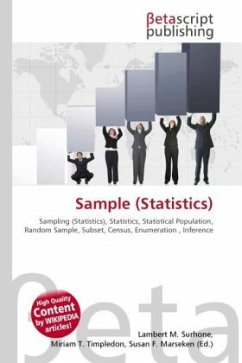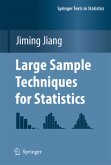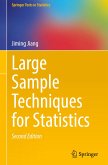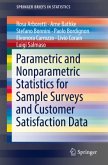High Quality Content by WIKIPEDIA articles! In statistics, a sample is a subset of a population. Typically, the population is very large, making a census or a complete enumeration of all the values in the population impractical or impossible. The sample represents a subset of manageable size. Samples are collected and statistics are calculated from the samples so that one can make inferences or extrapolations from the sample to the population. This process of collecting information from a sample is referred to as sampling. The best way to avoid a biased or unrepresentative sample is to select a random sample, also known as a probability sample. A random sample is defined as a sample where the probability that any individual member from the population being selected as part of the sample is exactly the same as any other individual member of the population. Several types of random samples are simple random samples, systematic samples, stratified random samples, and cluster random samples.








